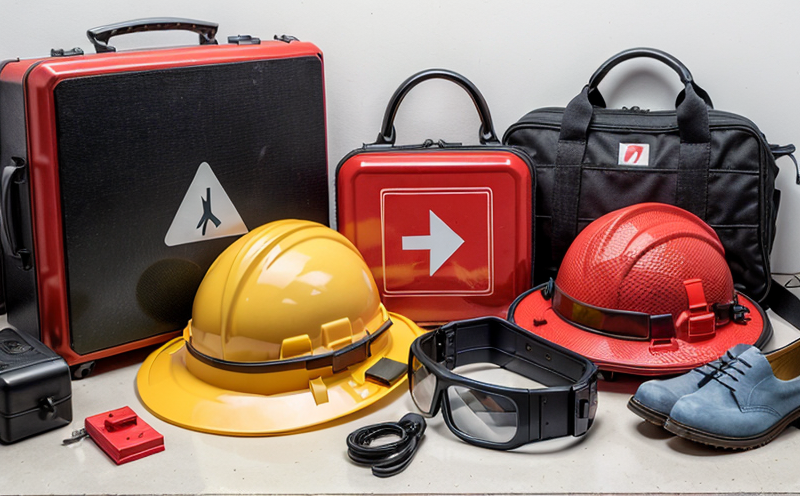EN 15154-5 Laboratory Emergency Shower Flow Capacity Assessment
The EN 15154-5 standard outlines the requirements for emergency showers, including their flow capacity and delivery uniformity. This assessment is critical in ensuring that emergency showers meet the safety standards required to protect workers from hazardous substances in various industries such as chemical manufacturing, pharmaceuticals, and research facilities.
The process involves measuring the water flow rate at multiple points along the shower's length. The standard specifies that the flow should be uniform across a specified distance of 180 cm (74.8 inches) to ensure adequate coverage for effective decontamination. The testing procedure is stringent, requiring precise calibration and measurement equipment.
Accurate assessment of emergency shower flow capacity ensures compliance with workplace safety regulations and enhances the reliability of these essential safety devices. Non-compliance can lead to serious health risks, including prolonged exposure to hazardous materials or ineffective decontamination procedures.
The testing procedure typically involves:
- Installation of a suitable measurement apparatus at the shower outlet
- Calibration of all measuring equipment according to relevant standards
- Ensuring the water supply is stable and within specified parameters
- Starting the flow and recording the output from multiple points along the 180 cm length
- Evaluating uniformity based on recorded data
- Reporting results against EN 15154-5 criteria
The testing protocol ensures that emergency showers are not only installed correctly but also function as intended in critical situations. Compliance with this standard is essential for maintaining a safe working environment and adhering to international safety standards.
For industries where chemical exposure is high, such as pharmaceutical manufacturing or laboratory research, the EN 15154-5 compliance becomes even more crucial. Properly tested emergency showers can significantly reduce risks associated with accidental spills or exposures.
The importance of this testing cannot be overstated. Non-compliance could lead to severe consequences including fines, legal action, and most importantly, compromised safety for workers. Ensuring that all safety equipment meets the required standards is a key responsibility for quality managers, compliance officers, and R&D engineers alike.
Industry Applications
The EN 15154-5 standard is particularly relevant in industries where hazardous chemicals are handled or used. These include:
- Pharmaceutical manufacturing
- Chemical processing and production
- Laboratory research facilities
- Hospital pharmacies
- Research institutions dealing with biological agents
In these environments, the risk of accidental exposure to hazardous chemicals is higher. Therefore, ensuring that emergency showers are capable of delivering an adequate flow rate is crucial for worker safety.
The standard also applies to facilities where employees may need immediate decontamination after coming into contact with harmful substances during their work. This includes laboratories handling biological agents or working with radioactive materials. By adhering to the EN 15154-5 requirements, employers can demonstrate a commitment to worker safety and compliance with international standards.
For quality managers and R&D engineers in these sectors, ensuring that all emergency showers meet the specified flow capacity is not just a regulatory requirement but also an ethical responsibility. Proper testing ensures that workers have reliable equipment available in emergencies, thereby minimizing potential risks and enhancing overall workplace safety.
Environmental and Sustainability Contributions
The assessment of emergency shower flow capacity under EN 15154-5 has several environmental benefits. By ensuring that showers deliver the correct amount of water, unnecessary waste can be minimized. Excessive water usage during tests or in real emergencies can lead to higher utility costs and increased strain on local water resources.
- Water Efficiency: Ensuring accurate flow rates reduces water wastage. This is particularly beneficial in regions where water scarcity is a concern.
- Eco-Friendly Operations: By complying with this standard, organizations contribute to more sustainable operations and reduce their environmental footprint.
- Resource Conservation: Properly functioning showers contribute to overall resource conservation efforts within the facility.
Incorporating EN 15154-5 compliance into workplace safety protocols not only enhances worker safety but also supports broader sustainability goals. This includes reducing operational costs associated with water usage, which can be passed on to stakeholders and ultimately contribute to a more sustainable economy.
Competitive Advantage and Market Impact
Compliance with the EN 15154-5 standard can provide significant competitive advantages in several ways:
- Innovation Leadership: Companies that invest in thorough testing and compliance demonstrate their commitment to innovation, which can set them apart from competitors.
- Enhanced Reputation: Adhering to international standards enhances the company’s reputation for excellence in safety practices.
- Customer Trust: Demonstrating adherence to strict safety standards builds trust with clients and stakeholders, fostering long-term relationships.
- Premium Pricing: Compliance can justify premium pricing strategies due to enhanced product reliability and worker safety.
In a competitive market where safety is increasingly becoming a priority for both employers and employees, meeting or exceeding these standards can differentiate a company from its competitors. This not only strengthens the brand’s image but also opens up opportunities for new business ventures in safer industries.
Furthermore, compliance with EN 15154-5 can lead to increased market share as customers are more likely to choose suppliers who prioritize safety and sustainability. This can translate into higher sales volumes and better margins, ultimately contributing to the company’s overall success.





